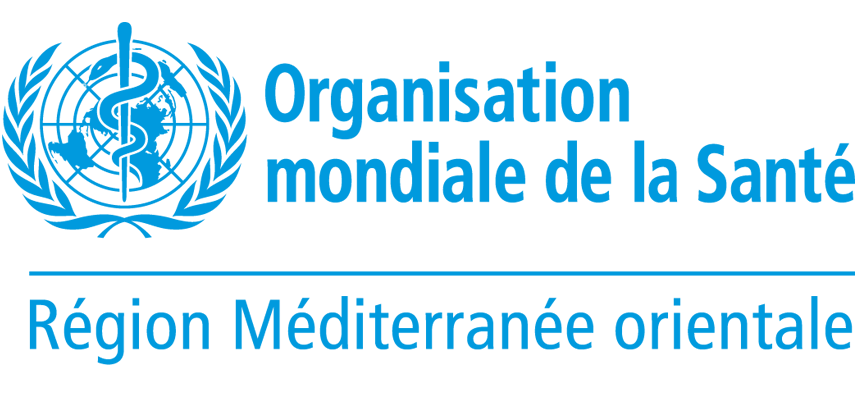Reproductive health
Reproductive, maternal, newborn and child health services are critically important in humanitarian settings, which typically see increases in maternal deaths, unintended pregnancies, sexually transmitted infections, unsafe abortions and GBV. In 2019, most governorates showed considerable progress in providing these services. In 2018, 32 hospitals across the country had neonatal resuscitation programmes; in 2019, this number rose to 38. The number of patients referred to specialized hospitals almost doubled, from 2821 to 5437. There was a similar rise in the number of mothers and newborns benefiting from home care (from 6361 in 2018 to 12 358 in 2019). An estimated 15% of deliveries and 15% of newborns will continue to require life-saving emergency interventions in 2020.

Primary health care
To enhance the coverage of affordable basic PHC services, WHO donated over 2.1 million treatment courses of life-saving medicines (including NCD kits) to health partners and delivered 406 pieces of equipment such as nebulizers, laboratory and ultrasound equipment, pulse oximeters, X-ray machines and generators to ministries, the Syrian Arab Red Crescent and NGOs. The Organization also supported over 5.2 million consultations in PHC centres throughout Syria.
Among the PHC efforts most appreciated by beneficiaries during 2019 was WHO’s donation of 27 mobile clinics to health responders across the country. WHO also provided 12 medical caravans to health partners working in the major IDP camps and informal settlements in the northeast. Each set of two caravans consisted of three clinics and a pharmacy.
Among the mobile medical teams supported by WHO were four teams in Homs and Hama that were providing services for people from Rukban settlement and two teams deployed to schools in eastern Ghouta as part of an oral health project.
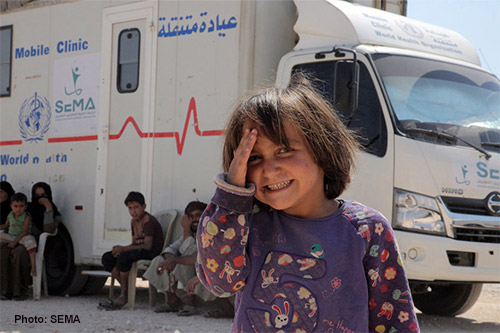
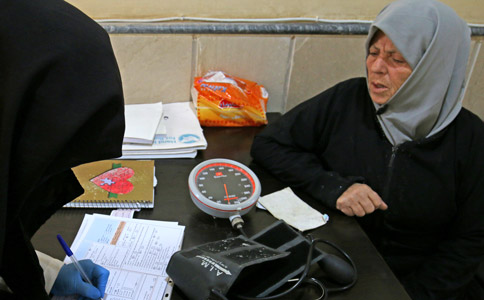
WHO integrated NCD treatment services into nine PHC facilities in northwest Syria. More than 23 000 patients were screened for cardiovascular diseases and more than 15 000 NCD consultations were provided. In 2020, WHO intends to replicate the model in other centres in the northwest. WHO also piloted an NCD emergency kit in 12 PHC centres in northwest Syria and trained almost 200 health workers on risk factors for chronic diseases and managing patients with thalassaemia. In line with restoring PHC services, WHO supported centres in Aleppo and Homs with essential medical equipment. During the year, these centres provided health care services to nearly 100 000 people, including physiotherapy for amputees as well as services for patients with artificial limbs and movement disorders. The core package of services at each health centre was reviewed and updated on a quarterly basis. These services covered general clinical services, child health, immunization, nutrition, NCDs, communicable diseases, sexual and reproductive health, mental health and essential trauma care.
In northeast Syria, WHO supported PHC centres and mobile clinics in all three governorates.
Preparedness for chemical events
WHO’s preparedness for chemical events focused on the two regions that saw the greatest number of hostilities in 2019: the northeast and the northwest. A total of 628 health workers in Idleb and Aleppo were trained on responding to chemical events, while approximately 450 clinicians and health workers in the governorates of Aleppo, As-Sweida, Damascus, Hama, Homs, Lattakia and Tartous received advanced bio-chemical training. WHO developed online and print guides in Arabic and Kurdish on the clinical management of chemical events and distributed them to health facilities in the northeast. In the northwest, 18 referral hospitals were provided with 2000 sets of PPE and essential medicines and antidotes.
WHO paid special attention to its staff working in hazardous areas. It stocked staff protection algorithms and chemical escape kits in all WHO offices and vehicles, and pre-positioned 500 sets of PPE, medicines, supplies and antidotes. Medical staff continued as in previous years to be trained on types of commonly used chemical weapons, chemical exposure, trauma care and how to provide a sound public health response to the health consequences of chemical exposure. In addition, WHO senior personnel participated in a training-of-trainers course in Amman on chemical exposure and trauma care.
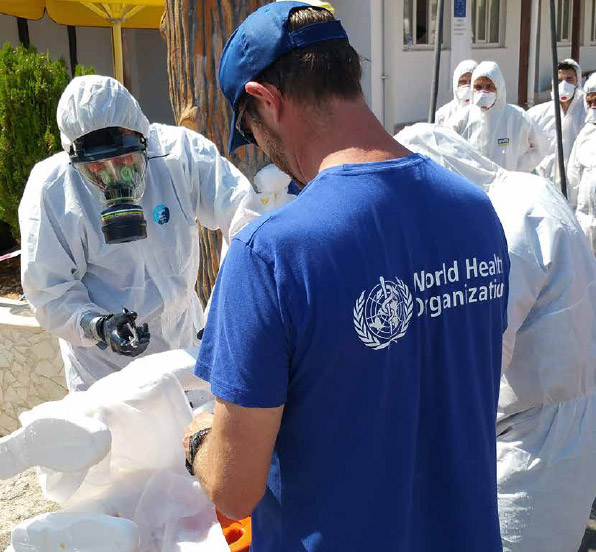
Polio
Syria has a robust surveillance system for acute flaccid paralysis (AFP). Stool specimens are collected and sent to the WHO-accredited National Polio Laboratory (NPL) in Damascus to determine whether poliovirus infection is the cause of paralysis. Surveillance indicators reached global targets for 2019 with a detection rate of >3/100 000 children under the age of 15. Sewer samples were collected from 16 sites in 13 governorates to exclude the possibility of poliovirus circulating unnoticed within the community. While the Syrian MoH is responsible for training, supervising and managing surveillance staff, WHO provides financial support for transport, incentives for timely collection and analysis, and capacity building.
Massive population displacements in northwest Syria served to emphasize the need to keep AFP surveillance indicators at the highest level. In 2019, 427 cases were detected with a high non-polio-AFP rate. No cases of Sabin type 2 or vaccine-derived wild polio virus were detected. However, the risk of polio remains. Despite limited access to some areas in the northwest, WHO and partners are continuing their monitoring efforts.
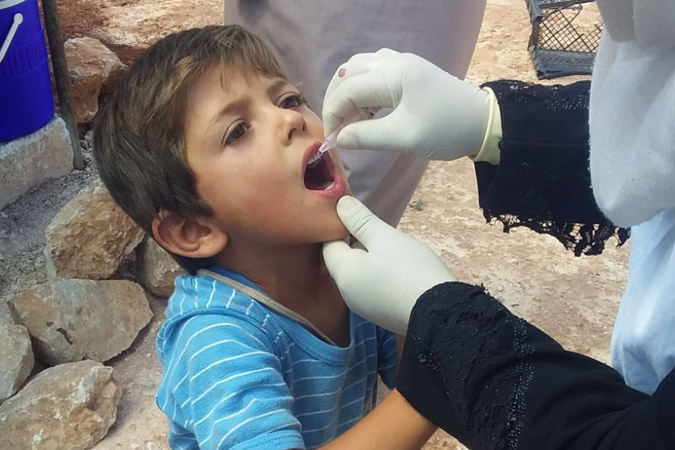
In 2019, WHO conducted two nationwide and two subnational polio immunization campaigns in all areas accessible from Damascus. Three polio immunization campaigns for children under the age of five were conducted in all accessible areas of northwest Syria.
National Polio Laboratory in Damascus
The NPL in Damascus carries out viral isolation and intra-typic differentiation of the poliovirus. Laboratory staff have been trained on genetic sequencing, which will enable the laboratory to perform this function once it receives the necessary equipment. In 2019, the NPL successfully passed the annual accreditation exercise carried out by WHO. Accreditation provides formal confirmation that the laboratory has the capability and the capacity to detect, identify and promptly report wild and vaccine-derived polioviruses that may be present in clinical and environmental specimens. WHO funded all supplies and equipment required by the NPL and supported capacity-building for senior NPL staff through internal and external workshops, in coordination with the WHO Regional Office in Cairo.
